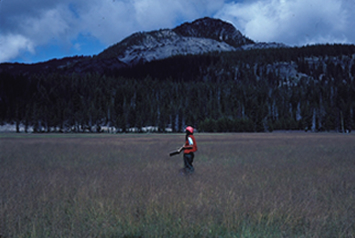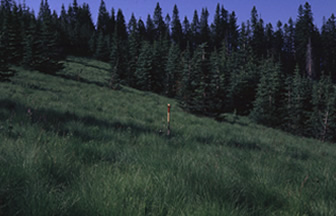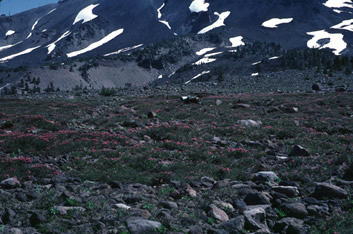|
From: Halpern, C. B. 2000. Montane and subalpine meadows of the Three Sisters Wilderness Area/Biosphere Reserve, Oregon: A community classification and gradient analysis. [Abstract]. 85th Annual Meeting of the Ecological Society of America, Snowbird, UT. To
view full poster as a pdf, click here (left
panel) (right panel) |
|
Meadows
occupy a small portion of the largely forested central Cascade region,
but support a large proportion of the regional flora. Despite the
ecologicalimportance and aesthetic value of these non-forested ecosystems,
there have been few studies of their composition, distribution, and
environmental correlates. I present a plant community classification
and gradient analysis of the montane and subalpine meadow vegetation
of the Three Sisters Wilderness Area, Oregon, a UNESCO Biosphere Reserve
representing the northern half of the Sierra-Cascade Province.
|
 |
|
| Montane
meadow type (ridgetops): Erigonum umbellatum - Gilia capitata |
||
 |
||
| Montane meadow
type (hydric basins): |
||
 |
||
|
Montane
- subalpine meadow type (upper slopes): Festuca viridula |
||
|
Halpern,
C. B., B. G. Smith, and J. F. Franklin. 1984. Composition, structure,
and distribution of the ecosystems of the Three Sisters Biosphere Reserve/Wilderness
Area. A Final Report to the United States Department of Agriculture.
(.pdf file) |
 |
|
| Subalpine
meadow type (flats): Phyllodoce empetriformis - Cassiope mertensiana |
